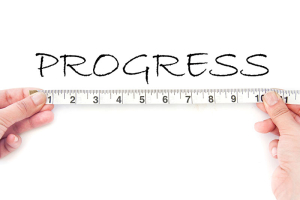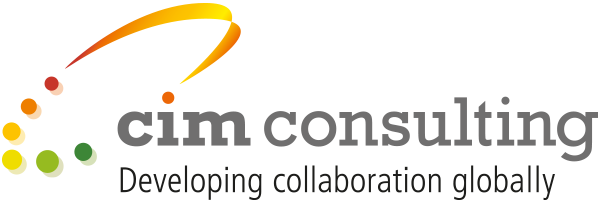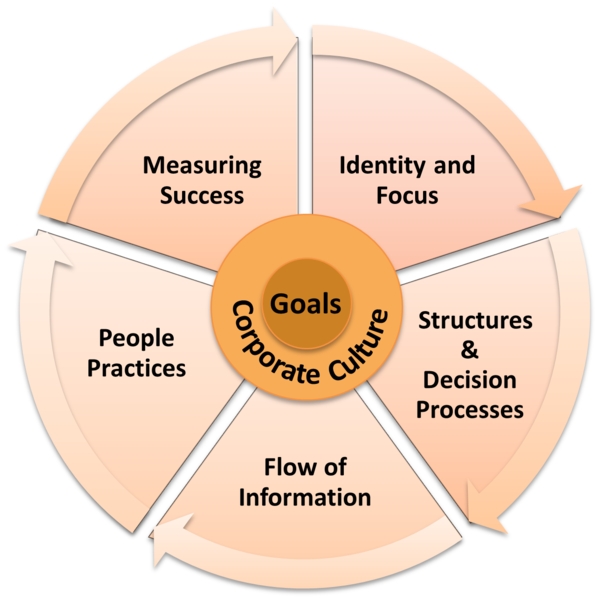 Culture & Organization
Culture & Organization
We help you to evolve your culture and organization to drive strong global collaboration and effectiveness
Successful international collaboration needs a strong organizational foundation.
When elements of organizational design align with a strong collaborative and mobilizing corporate culture, the energy of employees and stakeholders worldwide can be harnessed and focussed towards the achievement of the company’s goals. It is not easy to achieve this kind of inner coherence given today’s environment of rapid change and globalization, but it is essential for sustainable success.
An organizational culture with strong core principles that are valid around the world unites people across borders and boundaries and creates a common identity. These principles need to be translated into concrete behaviours at the local level.
We use our CIM Organisational Navigator – here a simplified version – as a tool for analysis, diagnosis and exchange with our clients, thus developing roadmaps for change initiatives.
At the heart is the corporate culture. Do the principles, values and behaviours that are practised day in day out throughout the organization really support the strategic goals? Are they understood and implemented worldwide, giving employees everywhere orientation and identity? Do the other elements align with the culture and equally support the strategic goals effectively?
Further down we describe more concretely how these different elements contribute to an infrastructure for healthy worldwide collaboration.
How can we help you?
- We help you to assess whether your culture as it is practiced today supports your strategic goals and whether other elements of organisational design align with it and equally support these goals. Generally speaking we do not use standard instruments, as our experience shows that the dimensions they measure may not be relevant to the problems you are trying to solve. Rather we develop our analysis through workshops, interviews, focus groups, observations and through targeted questionnaires. This way we can develop a deeper understanding of how things hang together and play out. Our external perspective helps to surface contradictions and implications that are difficult to see from up close.
- We share our insights and develop a diagnosis in close collaboration with your representatives to define what needs to evolve or change.
- When developing a roadmap for implementing the identified changes we accompany your team with our experience and our ideas.
- Finally, we can offer or develop seminars, workshops, trainings and coachings to help your leaders and teams to implement and foster new behaviours, particularly in the international context.
Elements of the CIM Navigator:
 Organizational Culture
Organizational Culture

Culture counts. In a global company that attempts to drive strategic initiatives and innovate from different places of the organization, a strong corporate culture in combination with a clear worldwide identity is the glue that holds it all together. It is at the heart of competitive advantage as it determines how things are done and how people interact.
A company’s culture, the beliefs, values and principles and the ensuing behaviours are a consequence of its heritage. These beliefs are shared and give the company its unique personality and strength. At the same time they may not be completely conscious and articulated and cannot easily be copied by competitors. Outsiders may wonder for example “how do these guys manage to come up with technical innovations so regularly?”
Strengths can sometimes turn into obstacles, however. A strong centralized engineering culture may not be so good at learning from markets and cooperating with colleagues from other cultures. To support tomorrow’s strategic needs and avoid contradictions and obstacles for new directions, a culture needs to evolve. Old strengths should not be discarded, but new ones have to be developed alongside and meld with them in new ways. This is best achieved by focussing on concrete new behaviours that are formulated, modelled and supported by the company’s leadership. Posters with statements about values are useless unless they are translated into concrete behaviours that are really put into practice.
Culture change, just as changes of structures and systems, does not necessarily need to happen right away at the level of the entire organization. It is easier to develop new sets of practices with new initiatives and newly set up teams and gradually spread it from there.
Every organizational culture is unique. Yet, companies with a global high performance culture share some characteristics: They foster a climate of trust and open dialogue. They are oriented outwards to maximize learning from customers, markets and other sources. They manage to mobilize and engage employees for the corporate cause so that they are passionate about achieving and speaking up for their convictions. Their employees have a bias for action and make and execute good decisions. They are connected and foster a strong team spirit and a focus on contribution. They have a way to encourage experimentation, learning and innovating.
We help you to assess whether these or any other characteristics that might be necessary for your global success are a living reality throughout your company or what obstacles need to be overcome.
 Identity and Focus
Identity and Focus
 One of the important preconditions for international collaboration is sharing a strong sense of identity and a clear focus of where the company is heading around the world.
One of the important preconditions for international collaboration is sharing a strong sense of identity and a clear focus of where the company is heading around the world.
It is the development and repeated communication of a clear and motivating purpose or mission of the company, formulated as a specific proposition and customer benefit, which gives people identity and orientation for decisions. Hand in hand with equally clear and shared goals and objectives it focuses people’s attention and energy towards common goals.
Both research and our own experience confirm that purpose and goals, contrary to what leaders think, are often not totally clear and not necessarily shared throughout parts of the organisation. A recent study revealed that 42 % of participating executives did not fully understand the strategies of their companies, saw contradictions between strategy and organizational setup and therefore resisted in part their implementation.
That is fatal. How can you focus the energies of individuals and especially of groups on objectives that are not fully understood and seem contradictory? That they can therefore not fully identify with? The further employees and collaborators are from the headoffice, the more pronounced is the ensuing disorientation. And it is just in these faraway, developing markets that orientation and identification is most crucial for success.
We pursue questions such as:
Do your collaborators share a clear and common understanding of these variables? Can they identify with them? What contradictions do they perceive? Do they know, how their work contributes to the greater whole?
 Structures and Decision Processes
Structures and Decision Processes
 Structures divide tasks and roles into hierarchical, functional and geographical units, such as business units, affiliates, departments, teams or projects for example. These units focus the competences, resources and energy of their members on specific tasks and thereby also define how people interact.
Structures divide tasks and roles into hierarchical, functional and geographical units, such as business units, affiliates, departments, teams or projects for example. These units focus the competences, resources and energy of their members on specific tasks and thereby also define how people interact.
New strategic goals that require collaboration to learn and innovate need separate structures which set the focus differently. When a company wants to develop targeted products for emerging markets for example, it has to configure dedicated structures that are capable and inclined to truly listen and learn from these markets and then blend that knowledge with existing technical expertise and resources. These structures – dedicated teams, special meeting formats, projects, initiatives – have to develop strong competencies in sensing, connecting, collaborating, integrating, experimenting, prototyping. They also need to have access to key decision makers, be connected to relevant corporate expertise, and be adequately supported with resources, communication platforms and coherent performance management systems.
Do your current structures live up to these demands? Which new, possibly temporary structures, such as local growth teams or
international project teams need to be created? How can they connect and interrelate with existing structures? How can the exchange of information and know-how be orchestrated?
Decision making processes require special attention. Are they designed in such a way that decisions can be taken quickly and unbureaucratically to react quickly to local opportunities and at the same time protect the quality of decisions? Collaboration looses its thrust when decision making is slow and intransparent.
 Flow of Information
Flow of Information
 Another important element of an infrastructure that facilitates international collaboration is the design of the information flow in both directions. On the one hand, information about the development of the company, updates on strategy, goals and learning needs to flow regularly from the centre to all the business functions, units and markets. This needs to be organized in such a way that people understand the impact on their own sphere of influence. On the other hand information and learning from these units and markets needs to flow back towards the centre and towards other relevant units without producing information overkill. This is not obvious.
Another important element of an infrastructure that facilitates international collaboration is the design of the information flow in both directions. On the one hand, information about the development of the company, updates on strategy, goals and learning needs to flow regularly from the centre to all the business functions, units and markets. This needs to be organized in such a way that people understand the impact on their own sphere of influence. On the other hand information and learning from these units and markets needs to flow back towards the centre and towards other relevant units without producing information overkill. This is not obvious.
Markets are often viewed as implementers of strategy. Local employees and collaborators are not automatically aware of the kind of information from their markets that is relevant and have not necessarily developed the competence to generate this information systematically. International meetings are surprisingly often one-way information events. In this way companies seriously underdevelop their sensing abilities in emerging markets and generally limit learning.
These are some of the questions we can explore:
To what degree is the information from the centre carried into every corner of the organization? How is information in the markets and from customers and stakeholders generated? How are collaborators taught and encouraged to develop information generation and sensing abilities? How is market information shared in the organization? What platforms, places and times are set aside for exchange and shared thinking? How is information overkill avoided?
 People Practices
People Practices
 People practices play an important role to boost international collaboration. Recruitment
People practices play an important role to boost international collaboration. Recruitment
and talent development can emphasize a global mindset and skillset as well as a disposition towards collaboration and team spirit. Goal setting, feedback processes and performance systems can include parts that are geared towards promoting collaboration.
The systems and attitudes towards recognition and rewards play a key role according to our experience. Are people in your organization really rewarded and recognized for bringing in their best talents, ideas and perspectives – even the critical ones – and contribute these to a shared team effort? Or are these systems in contradiction or neutral at best, rewarding essentially individual performance for example?
 Measuring Success
Measuring Success
 Another important element of a collaborative infrastructure is the way progress and success is measured. We are consciously avoiding the term “controlling” here, as control easily suggests the control of some over the others, particularly in an international environment.
Another important element of a collaborative infrastructure is the way progress and success is measured. We are consciously avoiding the term “controlling” here, as control easily suggests the control of some over the others, particularly in an international environment.
Instead, this is about enabling individuals, teams and groups to measure their progress themselves, by providing the motivation, resources and tools to do so; and make the necessary corrections. Do the systems and processes in your company lend themselves to this kind of
self-control?




